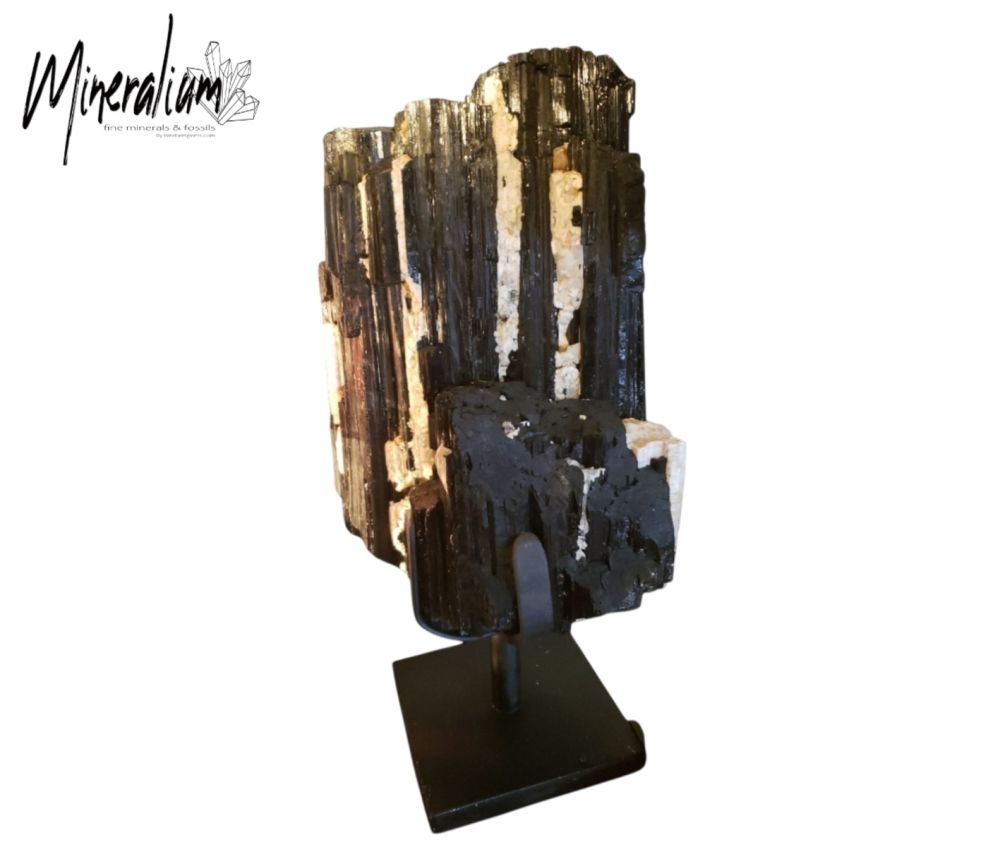We use cookies to make your experience better.
TimmersGems has a new website, existing customers also need to register again.
Black "schörl" tourmaline from Todomundo Brazil,
Black- also called Schörl Tourmaline from Todomundo in Brazil. This is a very beautiful and unique crystal. The total crystal that consists of 1 piece weighs no less than 48 kilos.
Availability:
In stock
SKU
122234
Tourmaline (quartz) is a group of minerals, all cyclosilicates. The minerals in this group share a characteristic chemical formula: AX3Y6(BO3)3 Si6O18(O, OH, F)4. The A can contain calcium or sodium. The X can be aluminum, iron, lithium, or magnesium. The Y is usually aluminum, but can also be chromium or iron. There can be some potassium in the A position, manganese in X, and vanadium in Y, but these elements are not often found in the tourmaline group formulas. Tourmaline is found in pegmatites, metamorphites, magmatites, and alluvial deposits. Although tourmaline was known in the Mediterranean region in ancient times, it was not introduced to Western Europe from Sri Lanka by the Dutch until 1703. They named the new gemstone with a Sinhalese word "Turmali", which means "stone of mixed colors". Rubellites were used as gemstones since ancient times - they were used by artists as talismans, because they were believed to enhance the artist's creative power. Tourmalines have certain unique properties. They are piezoelectric, which means that when a crystal is heated or compressed, different electrical charges are formed at both ends of the crystal. This creates an electrical potential. When an external electrical potential is applied to the crystal, it vibrates. The minerals are pleochroic, which means that the crystal is darker in color when viewed along the longest axis of the crystal than when viewed perpendicular to that axis. The four best known and most common tourmaline minerals have different colors and transparencies. Elbaite is transparent and a valuable gemstone. Schorl, which is rich in iron, is the most common mineral of the tourmaline group and is black and opaque. It is mainly formed in pegmatites, the extreme slowly cooling gangues of a magma. The two other tourmalines that occur regularly are dravite and uvite. Dravite is usually brown translucent and can grow very large. Uvite is green translucent to opaque. Tourmaline occurs in the sand fraction of Dutch Quaternary river sediments. It is a characteristic component of Meuse sands, among other things. In the heavy mineral analysis as it took place in the Netherlands at the National Geological Service during the second half of the twentieth century, the mineral is classified in the so-called stable group.
| Dimensions | 48 kilo |
|---|---|
| Country of Manufacture | Brazil |












